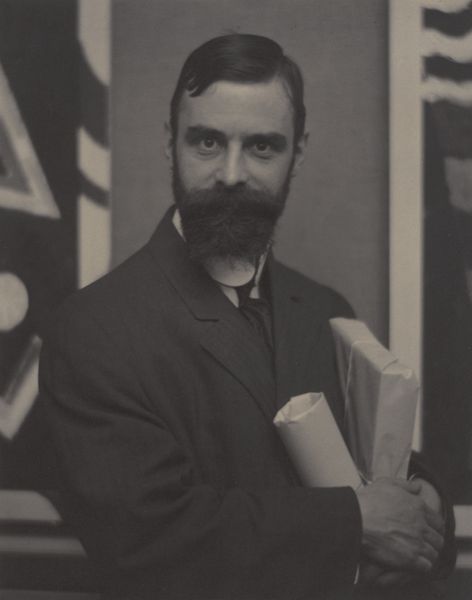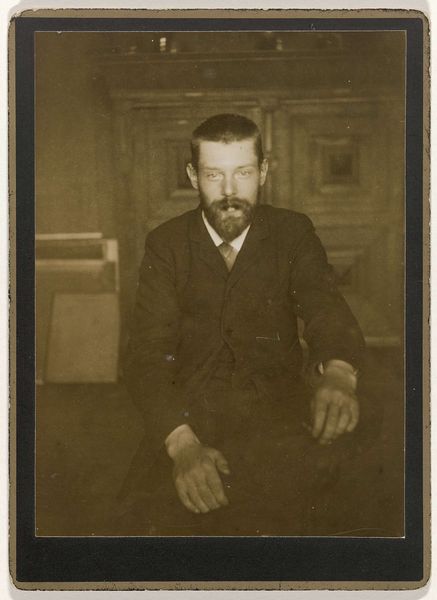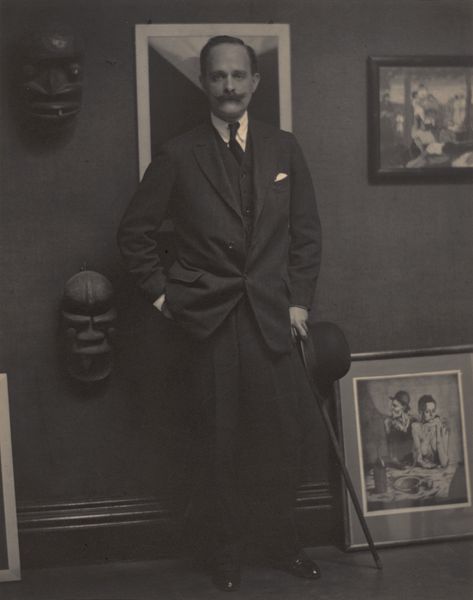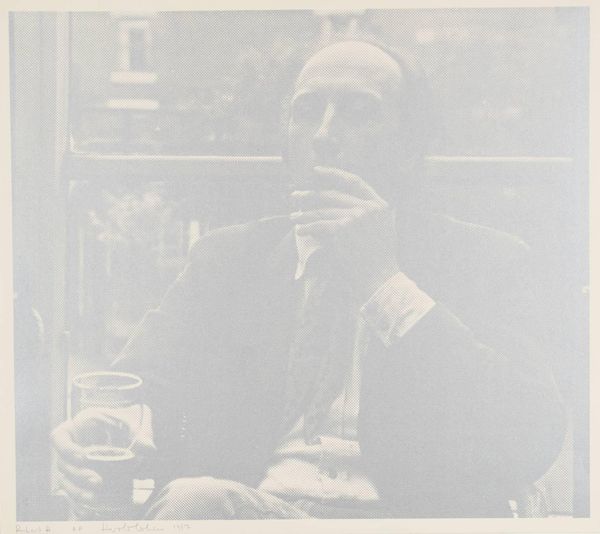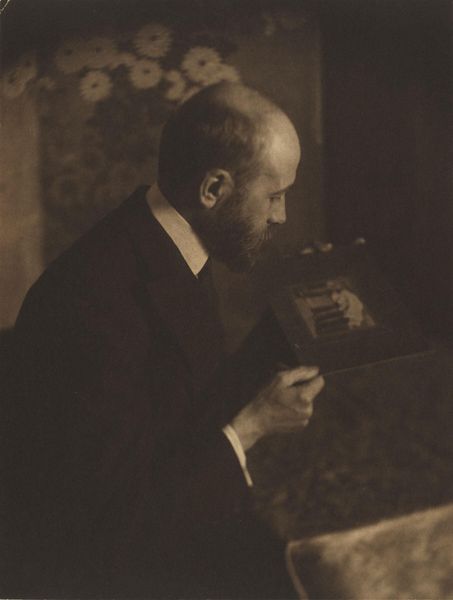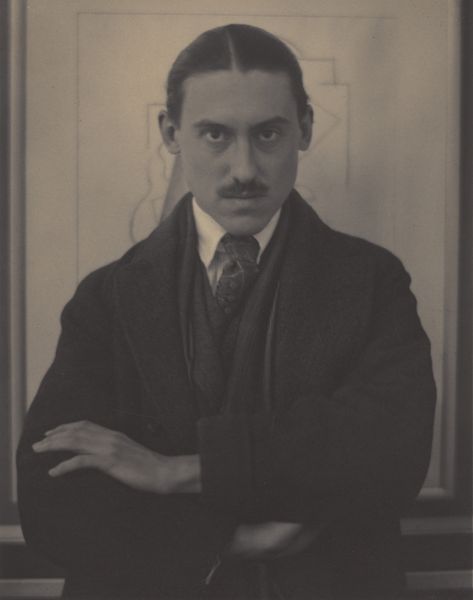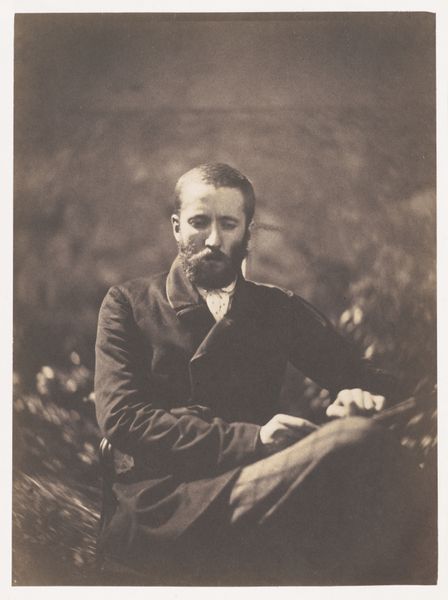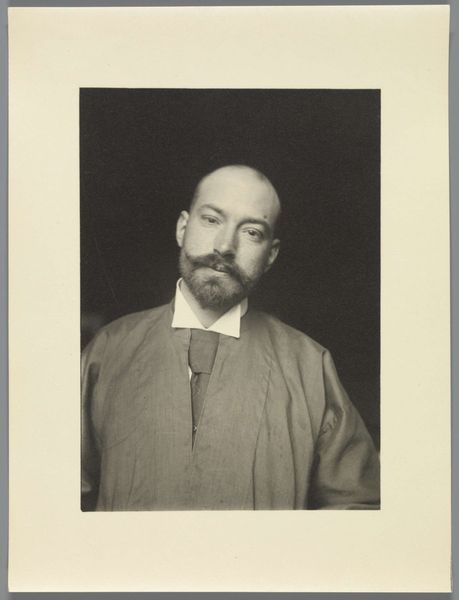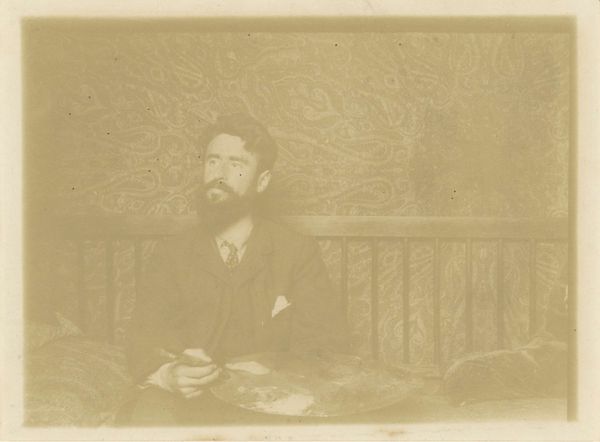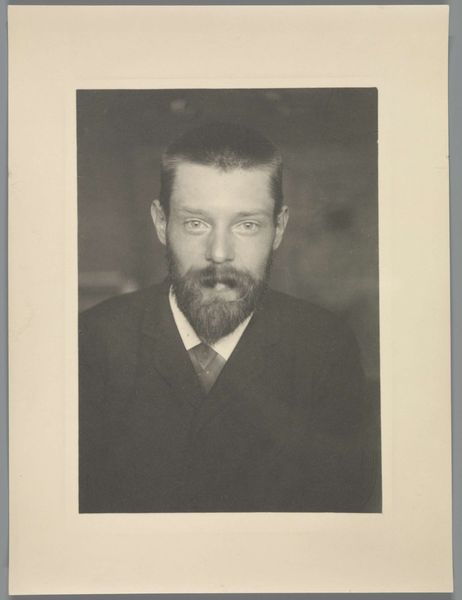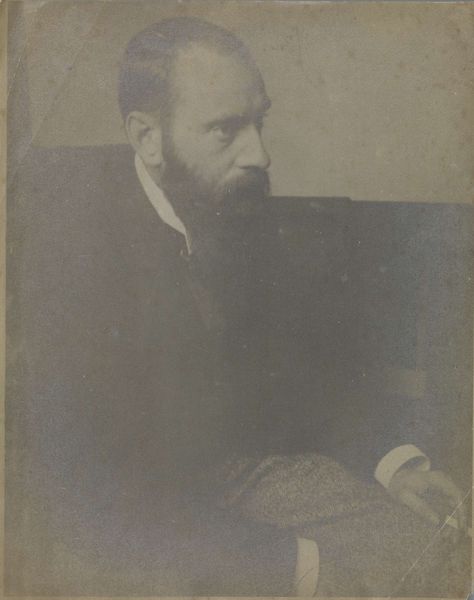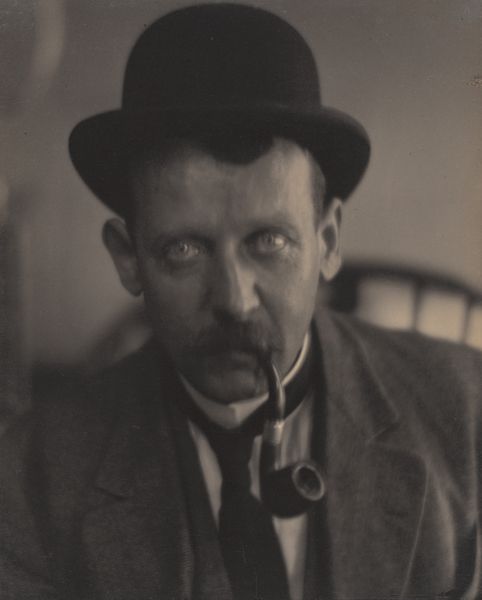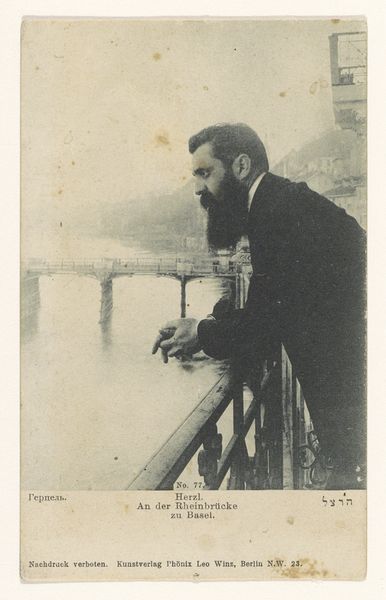
#
wedding photograph
#
profile picture
#
low key portrait
#
portrait image
#
portrait
#
portrait subject
#
portrait reference
#
single portrait
#
portrait drawing
#
celebrity portrait
Dimensions: sheet (trimmed to image): 18.9 x 23.5 cm (7 7/16 x 9 1/4 in.)
Copyright: National Gallery of Art: CC0 1.0
Curator: Alfred Stieglitz’s portrait of Arthur B. Carles, taken in 1912, offers a compelling look at artistic production. What strikes you most about this image? Editor: It's the pipe that first caught my eye. The way he holds it seems to suggest contemplation. What's so striking is the casual yet composed portrait and the central place of the pipe. What are your thoughts? Curator: The pipe is certainly significant. Consider the materials at play here: the wood of the pipe, the tobacco it would have held, the chemicals used in processing the photographic print itself. Each component speaks to a specific mode of production, to labor, and ultimately, to consumption. Think about the cultural context; the portrait aesthetic; and how they shape our reading of Carles as an artist and Stieglitz as the photographer and curator. The production, presentation and the means it exists through. Editor: So, it’s less about the symbolic "meaning" of the pipe and more about how its physical existence, the raw materials, tells a story about the artwork’s production? Curator: Precisely. Consider where the tobacco was grown, who harvested it, the factory where the pipe was manufactured. Similarly, where did Stieglitz obtain his photographic materials? How did his darkroom practices shape the final image? Exploring these material realities provides a deeper understanding of the work itself and, more broadly, early twentieth-century American culture. Editor: That's really fascinating. I never thought about it in such concrete terms. So, it's like peeling back the layers of production to get a sense of the historical forces at work. Curator: Exactly. Seeing art as a product of materials, labor, and consumption changes the way we understand its value and meaning. Instead of a romantic image of artistic genius, we confront the tangible conditions of its creation. Editor: I see now how examining the materiality offers a different perspective, moving beyond just the aesthetics of the portrait. Thanks, that’s given me a lot to consider.
Comments
No comments
Be the first to comment and join the conversation on the ultimate creative platform.
